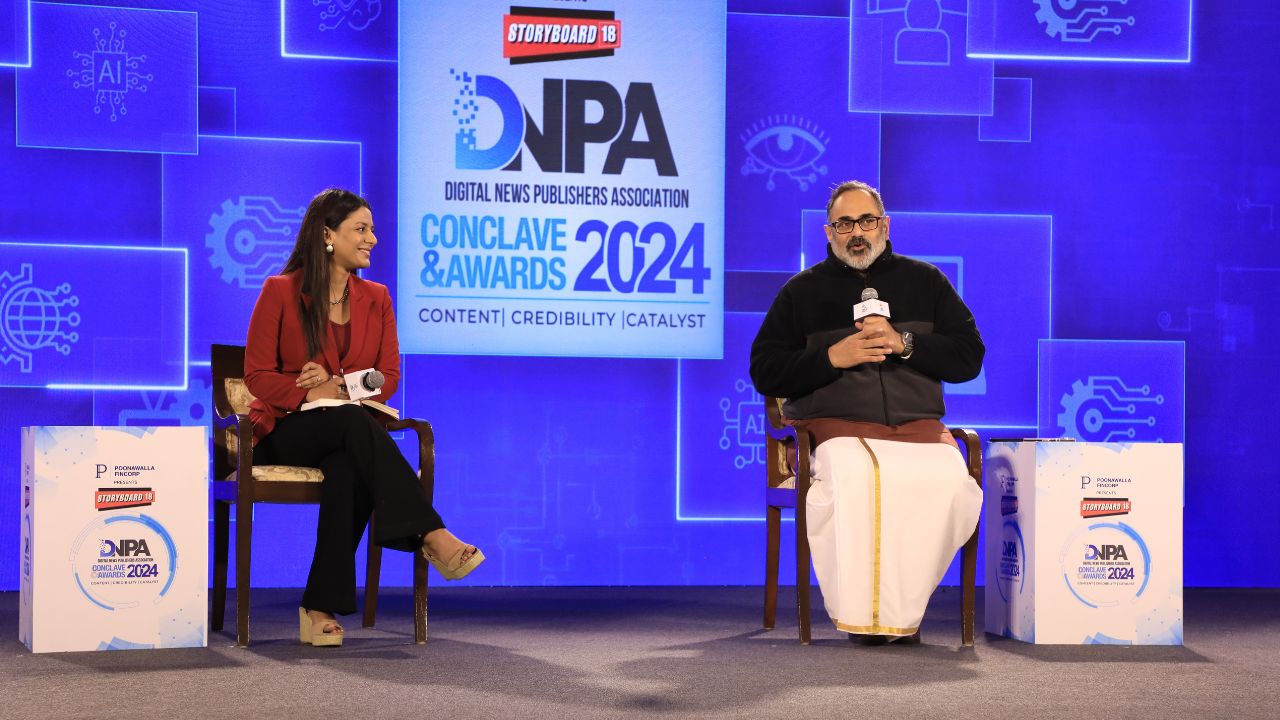It is time for ONAM. Inspired by Open Network Digital Commerce, I have coined this name. At the recent Storyboard18 DNPA Conclave and Awards 2024, Rajeev Chandrasekhar, Minister of State for Electronics, and Information Technology in the Government of India, assured that the government aims to address the revenue share issue and rectify it on priority.
From a policymaking point of view, we want the internet to be open and we certainly do not want monetisation on the internet to be in the purview or to be controlled by just one or two or three companies. We are certainly not of the opinion that our internet with 120 crore Indians that are going to be consuming it by 2025 should be catered to by the big islands on the internet be on e-commerce or search or social media or ad tech.
Read More: Fearing technology is like fearing the inevitable: Rajeev Chandrasekhar on AI
Let us slice and dice the AdTech numbers with some detail. India’s digital adspend today is around 4 bn USD out of which the big islands (read Google & Meta) take away nearly 80 percent leaving 800 mn USD for, what is called as the Open Web. Digital News Publishers belong to this segment. A recent programmatic transparency report from ANA, participated by Twenty-one marketers and twelve supply chain companies revealed that only 36 cents of every dollar that enters a DSP effectively reaches the consumer. And this essentially means that close to 500 mn USD was spent on technology to spend 300 mn USD on advertising. The cost of reaching media is so disproportionately high for the Open Web to survive on its own.
Juxtapose a recent report from Redseer which highlighted the fact that India’s digital ad spending is expected to hit $21 billion in the next five years and as per their report, besides big brands, SMBs are expected to account for 40 per cent of India’s overall digital ad expenditure by 2028.
If we assume that the status quo on high cost of reaching media remains for the next five years, the industry will be spending close to 2.5 bn on technology to advertise 1.5 bn. The cost of reaching media will simply not be affordable for the first-time digital advertisers from the small and medium businesses; and their first reaction will be to jettison the open web and go back to the walled gardens. That is if the AdTech ecosystem remains the way it is there right now.
The current AdTech stack and its architecture is imported from the west. Post the announcement from Google on the deprecation of cookies and their long winding timelines to implement, the industry for the past four years is struggling to find an alternative stack. IAB TechLab yesterday, highlighted that the Privacy Sandbox proposal from Google is far from being ready for implementation. So where is the problem? Essentially, when privacy regulations kick in, enterprises are obligated to capture and carry consumer consent across the digital supply chain and the current stack is not fit for this purpose. But we do not have to import any new technologies from the west anymore. Nor do we have to wait for some solutions to come from the west. For the first time, India can build something for her own; and better still export the same.
Read More: Adtech regulation a priority for Modi govt in third term: MoS Rajeev Chandrasekhar
Enter The India Stack. The India Stack across Identity (Aadhar) – Payment (UPI) – Data (DEPA) offers a readymade stack for the advertising industry to solve three very big challenges in front of them. De-duplication and verification of identities in measuring real reach; building an interoperable marketplace to run scaled up loyalty programs and last but not the least, a readymade consent management protocol that is successfully running in an even more important industry like banking and finance that can cover advertising and marketing as well. Open Network Audience Marketplace, or ONAM in short, can be built on the India Stack that offers affordable digital advertising infrastructure at a significantly reduced cost. Even 15 percent improvement in cost of advertising, will unlock close to 100 Mn USD of incremental revenues to the Open Web in India; and over a period of next five years, a whopping 500 Mn USD.
Read More: Solving the big tech revenue share issue will be PM’s priority in third term: Rajeev Chandrasekhar
ONAM can be built as a decentralized audience marketplace where brands and publishers can share their respective customer details, find the match, target, re-target, and conduct advertising campaigns. ONAM can provide a privacy compliant and scaled up advertising platform, where quality and brand safe inventory is made available for activation with full life cycle and continuous measurement.
Read More: Internet cannot be a place where the law doesn’t reach: Rajeev Chandrasekhar on OTT regulation
Gowthaman Ragothaman is a 30-year media, advertising and marketing professional and CEO of Aqilliz, a blockchain solutions company for the marketing industry.
